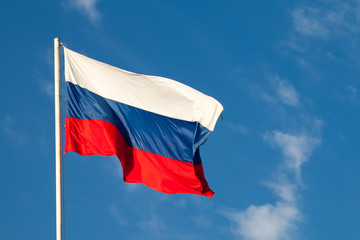This article was originally published by Carus Michaelangelo at The Mises Institute.
Like many people, I eagerly await Scott Horton’s upcoming book, Provoked, which will explain in detail the US provocations that led to Russia’s invasion of Ukraine. But will it come too late?
Since the Russia-Ukraine war began, the Biden administration, in collaboration with the Ukrainian government and much of Europe, has continued incessantly provoking Putin toward a wider conflict with the West. One can recognize the dangerous path we tread without justifying any of Russia’s responses to these provocations.
The US and Europe have armed Ukraine to the teeth. The West has funded Ukraine’s military effort—and a great deal of corruption—to the tune of hundreds of billions of dollars. Supposedly this is good for the US because it aids the US military-industrial complex, but this will be cold comfort in the event of war with Russia.
Ukraine sabotaged the Nord Stream pipeline, but everyone rushed to blame Russia initially. Ukraine launched an invasion of Russia’s Kursk region in early August, apparently surprising the US government. Since the invasion and the Wall Street Journal’s revelations about the Nord Stream pipeline, the US government’s support for Ukraine has not changed one iota. Indeed, the Kursk incursion ultimately met US approval.
The US government supplied Ukraine with ATACMS missiles that exploded a beach in Crimea in April. And now, Ukraine is again launching attacks on Moscow, this time sending drones that have attacked residential buildings and an airport. Is our blank check to Ukraine—as its action steadily increases in desperation—going to make war less likely, as the war hawks seem to imagine? Hardly.
The US makes an elementary blunder: they treat war with Ukraine as a proxy war. But to Russia, it is anything but. Our Ukrainian proxy is not fighting a Russian proxy, but Russia itself. Just because the fighting was taking place in neighboring Ukraine, rather than in Russia, changes nothing. US money, weapons, and intelligence are being used to make war on Russia. It is that simple to Russian leaders.
The US establishment is playing a dangerous game. Blinded by their own hubris into thinking that they know better, they claim that Putin bluffs when he hints that he may use nuclear weapons, or when Russian officials indicate Russia is changing its nuclear doctrine in response to the West’s actions. Establishment hacks claim Putin is a “coward” who will back down to displays of power and resolve from the West. (One might call this the “coward, coward, coward” narrative). The Ukrainian government, unsurprisingly, spins the same yarn.
Of course, this narrative is blatantly inconsistent and self-serving. Michael McFaul, former US Ambassador to Russia and a fanatical Russia hawk, at one and the same time knows Putin will back down to US deterrence, but can state with a straight face that, “Putin consistently acts belligerently even when the costs would seem to outweigh the benefits.” Moreover, he says, “American policymakers also underestimate the Russian leader’s tolerance for risky behavior, often assuming he will respond predictably to threats and inducements.” Well, which is it? Do we know Putin will back down, or is he unpredictable and willing to take costly actions driven by fear? It is no exaggeration to say that everything hinges on this single, unverifiable speculation about Putin.
When their narrative invariably runs into the harsh mistress of reality, they resort to page one of the Washington, DC playbook—unprecedented action and funding was not enough, we need to do and spend even more. If the West does not fund Ukraine or if we make peace with Russia, Putin hawks say, we are rewarding aggression. Hundreds of billions of dollars to signal that we cannot “reward aggression” is the typical Beltway or out-of-touch, think tank logic: take costly, symbolic action that makes no difference. Because in the end, it will have made no difference, other than to prolong the conflict and increase death and suffering. Doing more will only move us closer to the brink. As revealed in the New York Times in late August, the Biden administration at one point “feared the likelihood of nuclear use might rise to 50 percent or even higher.” Yet, we escalate further.
At every step, the US political establishment has been an obstacle to peace. Victoria Nuland, Biden’s former Under Secretary of State for Political Affairs, recently admitted what we already knew: that the US helped sabotage a peace proposal that could have ended the Russia-Ukraine war in its infancy. Their incessant refrain that Putin could not be trusted and that he was salivating at the prospect of moving on to Eastern Europe after Ukraine, was not helpful either. History will remember that the war could have been over almost immediately, and countless Ukrainians alive today, had the US establishment had peace in mind, rather than Putin in their crosshairs.
Read full article here


